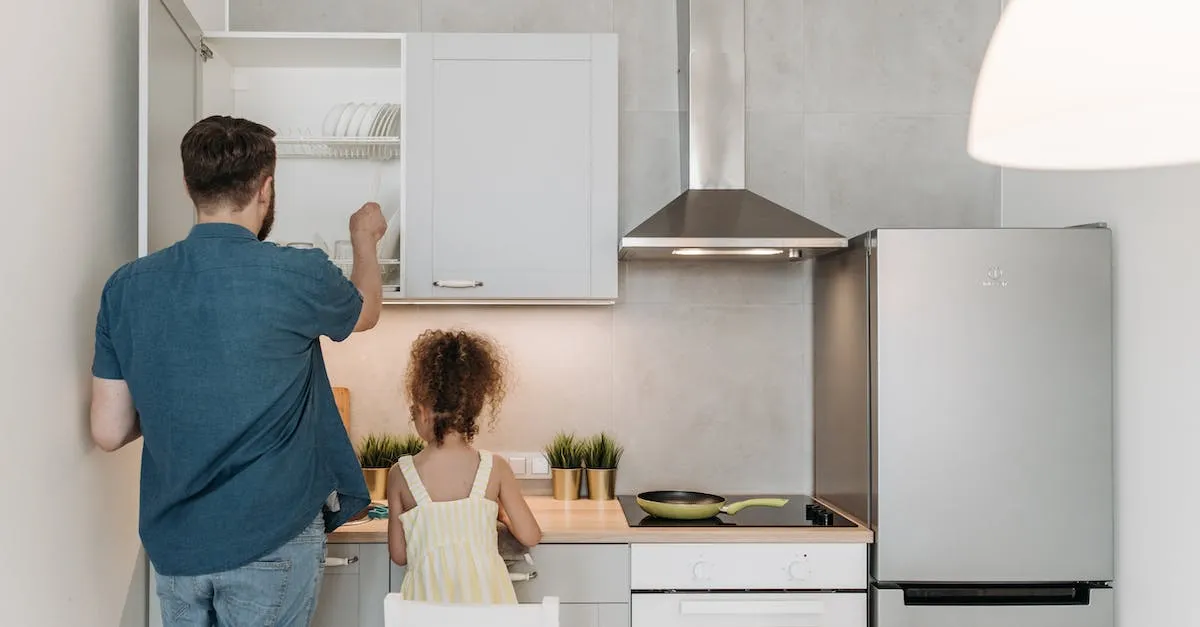What Are The Chances Of A Father Getting 50/50 Custody In California?
When parents divorce or separate in California, one of the most important decisions is how custody of the children will be shared between the mother and father. Many fathers aim for a 50/50 timeshare arrangement, which provides equal parenting time. However, what are the actual chances of securing this outcome?
If you’re short on time, here’s a quick answer to your question: While judges consider each case individually, recent trends show that fathers in California have a decent chance at winning 50/50 physical custody, with it being awarded in over half of custody cases.
California Custody Laws and Presumptions
When it comes to child custody cases in California, the primary concern of the court is to ensure the best interests of the child. The court takes into account various factors to determine custody arrangements, and there is no automatic presumption of a 50/50 custody split between parents.
However, California law does not favor one gender over another when it comes to custody decisions.
Best Interest of the Child
The “best interest of the child” standard is the guiding principle in California custody cases. This means that the court will consider factors such as the child’s age, health, and safety, as well as the emotional bond between the child and each parent.
The court may also evaluate the stability of each parent’s home environment, the ability to provide for the child’s physical and emotional needs, and any history of domestic violence or substance abuse.
Ultimately, the court aims to create a custody arrangement that promotes the child’s well-being and stability.
California Family Code Section 3011 states that the court shall not consider the gender of the parent when determining custody. This means that fathers have the same legal rights as mothers when it comes to seeking custody of their children.
The court will assess each parent’s ability to foster a healthy and loving relationship with the child, regardless of their gender.
No Gender Bias
California law is clear that there should be no gender bias in custody decisions. Family Code Section 3040 states that it is the public policy of the state to ensure that children have frequent and continuing contact with both parents after separation or divorce.
The court encourages parents to work together to develop a parenting plan that allows for shared custody or visitation rights.
In recent years, there has been a shift towards encouraging joint custody arrangements in California. While there is no guarantee of a 50/50 split, more and more courts are recognizing the benefits of shared parenting when it is in the child’s best interest.
Research has shown that children who have ongoing and meaningful contact with both parents tend to have better emotional and psychological outcomes.
It’s important to note that every custody case is unique, and the outcome will depend on the specific circumstances and evidence presented. If you are a father seeking 50/50 custody in California, it is crucial to gather evidence that demonstrates your ability to provide a stable and loving environment for your child.
Consulting with an experienced family law attorney can help you navigate the complexities of the legal process and increase your chances of achieving a favorable custody arrangement.
Factors That Influence Custody Decisions
When it comes to determining custody arrangements, there are several factors that influence the outcome. In California, the primary consideration is the best interests of the child. The court will evaluate various aspects of each parent’s life and their relationship with the child to make a custody decision.
Here are some factors that can have an impact:
Parenting History
The parenting history of each parent plays a crucial role in custody decisions. The court will examine the involvement of each parent in the child’s life, including their ability to provide a stable and nurturing environment.
Factors such as the willingness to co-parent, the ability to meet the child’s needs, and any history of abuse or neglect will be taken into account. The court may also consider the child’s relationship with siblings and extended family members.
Child’s Wishes
The child’s wishes may also be considered in custody decisions, depending on their age and maturity level. While the court ultimately makes the final decision, they may take into account the child’s preference if it aligns with their best interests.
It’s important to note that the child’s wishes are just one factor among many that the court considers, and they will also assess the child’s understanding of the situation and the potential consequences of their desired custody arrangement.
Practical Considerations
Practical considerations such as the proximity of each parent’s residence to the child’s school, extracurricular activities, and other important factors can also influence custody decisions. The court will evaluate the logistics of each parent’s proposed custody arrangement and assess whether it is feasible and practical for the child.
Additionally, the court may consider the stability of each parent’s living situation, their work schedules, and their ability to provide for the child’s physical and emotional needs.
It is important to remember that every custody case is unique, and the outcome can vary depending on the specific circumstances. Consulting with a knowledgeable family law attorney can provide valuable guidance and support throughout the custody process.
Statistics on California Custody Outcomes
When it comes to custody battles in California, there has been a noticeable increase in the number of cases where parents are awarded 50/50 custody. In the past, it was more common for one parent to be awarded primary custody while the other parent received visitation rights.
However, in recent years, there has been a shift towards shared custody arrangements, where both parents have equal time with their children.
Increase in Shared Custody
According to statistics from the California Courts, the number of cases where parents are awarded joint custody has been steadily rising. In fact, in some counties, joint custody is now the default outcome unless there are extenuating circumstances that would make it not in the best interest of the child.
This change reflects a growing recognition of the importance of both parents in a child’s life and a desire to promote healthy co-parenting relationships.
Research has shown that children who have equal time with both parents tend to have better emotional and behavioral outcomes. They are less likely to experience the negative effects of divorce, such as depression or anxiety, and have a stronger sense of stability and security.
This is why courts in California are increasingly favoring shared custody arrangements.
Reasons for Higher Joint Custody Rates
There are several reasons why joint custody has become more prevalent in California. Firstly, there has been a shift in societal norms and attitudes towards parenting. Fathers are now more involved in their children’s lives than ever before, and there is a greater recognition of the importance of a father’s role in a child’s upbringing.
Additionally, there has been a growing body of research that supports the benefits of shared custody. Studies have shown that children who have both parents actively involved in their lives have better academic performance, higher self-esteem, and stronger relationships with both parents.
This evidence has influenced the decisions of judges and has led to an increase in the number of joint custody awards.
It is important to note that the outcome of custody battles in California can still vary depending on the specific circumstances of each case. The court will always prioritize the best interest of the child and consider factors such as the parents’ ability to co-parent, the child’s relationship with each parent, and any history of domestic violence or substance abuse.
For more information on custody outcomes in California, you can visit the California Courts website which provides valuable resources and guidelines for parents navigating the custody process.
Strategies for Fathers to Obtain 50/50 Custody
Be an Active Co-Parent from the Start
One of the most important strategies for fathers looking to obtain 50/50 custody in California is to be an active co-parent from the very beginning. This means being involved in your child’s life right from the start, including attending doctor’s appointments, participating in school activities, and spending quality time with your child.
By demonstrating your commitment and willingness to be an active co-parent, you are showing the court that you are dedicated to being a hands-on father.
It is also crucial to maintain open and effective communication with the other parent. This includes discussing important decisions regarding your child’s upbringing, such as education, healthcare, and extracurricular activities.
By actively participating in these discussions and demonstrating your ability to co-parent effectively, you are more likely to be seen as a responsible and capable parent by the court.
Build a Stable Home Environment
Another key strategy for fathers seeking 50/50 custody in California is to build a stable home environment for their child. This means providing a safe and nurturing space where your child can thrive. It is important to create a stable routine that includes regular mealtimes, bedtime routines, and consistent rules and boundaries.
Additionally, fathers should ensure that their home is equipped with the necessary resources and support systems for their child’s well-being. This includes having a suitable living space, access to educational materials, and a network of supportive family and friends.
By demonstrating that you have created a stable and supportive environment for your child, you are more likely to be seen as a capable and responsible parent by the court.
It is important to note that the specific requirements for obtaining 50/50 custody can vary depending on the circumstances of each case and the preferences of the judge. Seeking legal advice from a qualified family law attorney can provide fathers with a better understanding of the factors that are relevant in their specific situation and help them navigate the complex legal process.
For more information on child custody laws in California, you can visit www.courts.ca.gov, which provides comprehensive resources on family law and custody matters in the state.
Conclusion
While no custody outcome is ever guaranteed, the trend toward frequent 50/50 custody grants in California suggests fathers have a very real chance at winning equal parenting time. By understanding state laws, presenting their case effectively, and focusing on the best interest of the children, fathers can position themselves well in pursuing a 50/50 custody arrangement.








